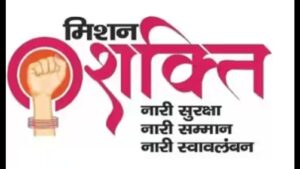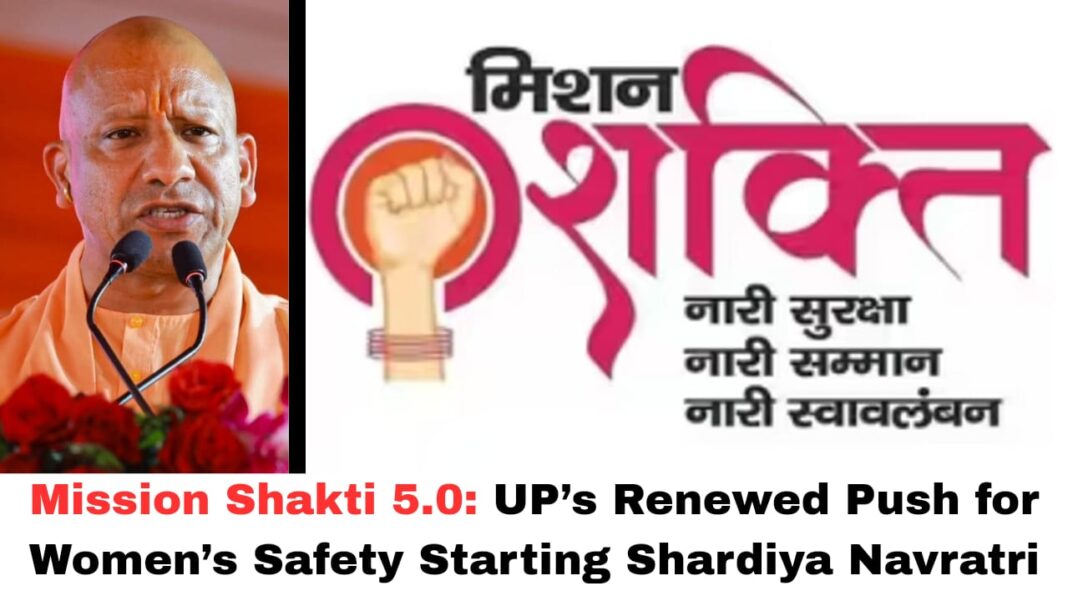Digital News Guru Uttar Pradesh Desk:
CM Yogi Adityanath Unveils Mission Shakti 5.0 Starting 22 Sept, New Phase in UP to Boost Women’s Protection & Rights
Uttar Pradesh Chief Minister Yogi Adityanath has announced the fifth phase of Mission Shakti, the state government’s flagship initiative for women’s safety, empowerment and dignity. Mission Shakti 5.0 is set to begin on 22 September 2025, coinciding with the first day of Shardiya Navratri, and will stretch for 30 days. The aim is to intensify efforts around law enforcement, community engagement, awareness, and safety net measures during a period which often sees increased public gatherings and mobility.
Key Features & What’s New in Phase 5.0
Here are the main aspects of Mission Shakti 5.0, including what is planned, and what’s being expanded or strengthened:
- Enhanced Police Patrolling and Visibility
- Foot patrols and PRV-112 vehicle patrolling will be strengthened throughout the campaign period.
- Senior police officers (zonal ADGs, IGs, DIGs) will be more visible — they are expected to engage with citizens, inspect police forces, and even take part in patrols themselves. This is intended to build confidence among the public and increase accountability.
- Deployment of Female Police Personnel
- There are around 44,177 female police personnel in UP who will be more fully mobilised.

- Deployments will span 57,000 village panchayats and 14,000 urban wards to ensure coverage and reach in both rural and urban settings. Female officers in these localities will engage with women and girls, share information about legal rights and welfare schemes, and respond to emergencies.
- There are around 44,177 female police personnel in UP who will be more fully mobilised.
- Focus on Festivals, Gatherings & Public Places
- Activating safety and policing measures in religious places, public gatherings, markets, and other crowded locations, especially during the Navratri festival.
- Anti-Romeo squads will be on alert; their role is to thwart harassment in public spaces, especially around schools and colleges.
- Legal Aid, Awareness & Public Outreach
- Awareness programs will be held in districts, schools, colleges — including screening educational films, and/or launching awareness drives about women’s rights and how to access help.
- Ensuring legal support, especially for women in prisons, and ensuring enforcement is fair, sensitive, and quick.
- Institutional and Administrative Measures
- A strong emphasis on oversight, with district and local monitoring of complaint redressal. Any negligence in handling complaints is to be viewed seriously.
- Coordination among many departments will be important: Home, Police, Women and Child Development, Education, Urban & Rural Development, etc.
- Physical Infrastructure & Safety Amenities
- Proposals include establishing dedicated areas for women in workplaces (resting rooms, crèches), women’s barracks in police stations, feeding rooms in public places, pink booths, toilets, rest areas in construction sites / factories.
Why Launch During Navratri?
The timing of the campaign is strategic. Navratri is a religious festival with widespread observance, processions, and public gatherings. Public life tends to intensify: more mobility, more crowds, more interactions. These are times when women’s safety can be more vulnerable. Holding Mission Shakti 5.0 from 22 September (first day of Shardiya Navratri) seeks to preempt risks, increase vigilance, and reinforce safety mechanisms when they are most needed.

What Mission Shakti Has Done Previously — Building on Past Phases
To understand the promise and challenges of Phase 5.0, it helps to look back at what past phases of Mission Shakti have done:
- The campaign launched in 2020, during Navratri, with a mandate to raise awareness, enhance policing, and enact stricter action against crime toward women.
- Measures have included separate rooms for women complainants in police stations, dedicated women power-lines (e.g. 1090), awareness drives, anti-Romeo squads, surveillance in public spaces, and identification of dark spots.
- Departments like education, urban development, health also participated in prior phases, with efforts to ensure women’s safety infrastructure (lighting, safe toilets, etc.).
Phase 5.0 continues many of these themes but with what appears to be stronger scaling (more female personnel, more wards/panchayats covered), better senior-official accountability, and more holistic inclusion of both urban and rural settings.
Possible Challenges & What Will Determine Success
While the plan is ambitious, the implementation will have to navigate certain challenges for the campaign to make a real difference:
- Coverage & Logistics: Reaching remote villages, ensuring adequate female police officers in every ward/panchayat, keeping up with patrols and response times—these require strong administrative backing.
- Awareness & Trust: Even when safety programs exist, women often do not report harassment or crime due to fear, stigma, lack of trust in law enforcement, or lack of knowledge about rights. Public outreach needs to cross social, educational, and cultural barriers.
- Quality of Response: Patrols are one thing; how quickly complaints are acted upon, how sensitively victims are handled, legal follow-ups, and justice delivery matter. Poor handling can undo public confidence.
- Coordination Across Departments: Many departments are involved (police, women & child, education, rural/urban development). Their coordination, clarity in roles and accountability are vital.
- Sustainability Beyond 30 Days: A one-month campaign provides a boost, but real change in safety often requires sustained effort over time—continued policing, community participation, infrastructure, policy reforms.

What It Means for Women & Society
If Phase 5.0 succeeds as planned, it could have several positive impacts:
- Increased sense of safety for women and girls in public spaces, especially around times of festivals.
- Better awareness among women of their rights and of welfare / legal mechanisms.
- Possibly higher reporting of complaints and better responsiveness by authorities, which could start changing deterrence dynamics.
- Infrastructure improvements (resting rooms, better facilities in work areas, safe transit etc.) may improve everyday lives.
- Enhancement of the role of female police force—both in visibility and in practical empowerment.
Conclusion
With Mission Shakti 5.0, UP is intensifying its efforts to ensure women’s safety, especially during a socially significant period. The plan reflects lessons learned from earlier phases, and brings ambitious goals: scaling up female police deployment, strengthening enforcement, spreading awareness, and improving infrastructure. Whether it becomes more than an intensive campaign—i.e. whether the changes are felt deeply by women in urban slums, villages, colleges, workplaces—will depend on how well the execution, monitoring, and public participation play out.
In the coming weeks, stakeholders—government, police, civil society, and most importantly, citizens—will be watching closely to see if this renewed push delivers tangible safety and dignity for women across Uttar Pradesh.
You May Also Read: New Delhi AI Impact Summit: India’s Plan for Non-Discriminatory AI Access








